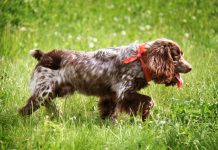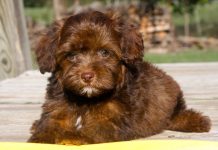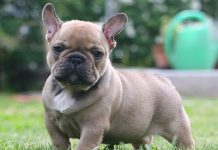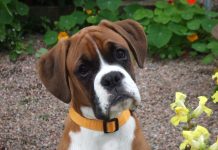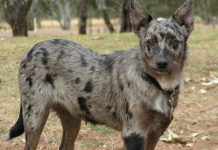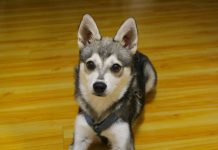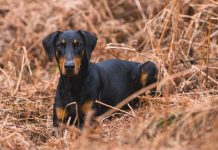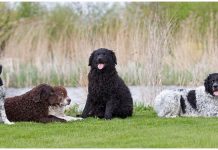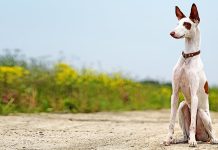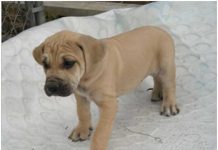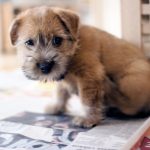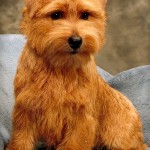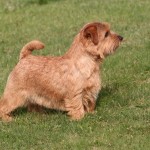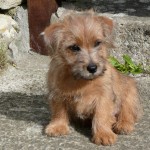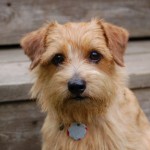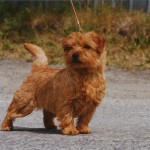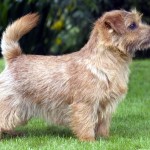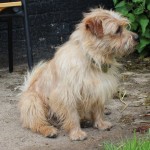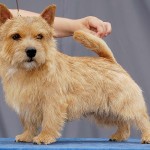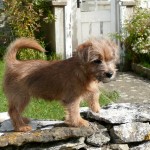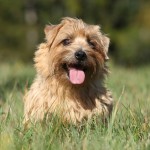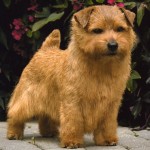This is a perfect breed for anyone seeking for a lively and fearless canine companion. The Norfolk Terrier is also affectionate. He brings with him an outgoing and perky personality. With a timeless constitution, this twelve-pound dog charms everyone who knows, adores, and loves him. One great and attractive attribute about this dog is the fact that he is hardly or never boring.
Just like other Terriers, the Norfolk Terrier is tenacious, charming, hardworking, and independent. For sure, this dog is incredibly cute. He brings with him small and dark eyes that always sparkle with mischief. The dog also has a wiry coat and scruffy. Certainly, it is quite difficult to resist his charm and appeal. Cortab Terriers, and Jones Terriers are the other names that refer to this dog.
History and Health :
- History :
The Norfolk Terrier was inititally/originally bred for killing or hunting vermin in barns. One stand out feature of this dog has to do with his ears. Later, this breed was later developed in towns of Norwich and Norfolk. This was during the early 1800s. This time he was generally a hunting and farming dog. Most people believe this dog was crossed by Irish Terriers, Cairn Terriers, and Border Terriers. Jodrell Hopkins was one of the maiden breeders of the Norfolk Terrier. Together with other students from Cambridge, he bred and eventually sold the little dogs to other students as well as non-students. At the time, most of the dogs were red in color.
- Health :
Generally, the Norfolk Terrier is a very hearty dog. However, he is usually prone to a number of conditions. MVD (Mitral Valve Disease) is one of the common conditions that affect this dog. This life threatening abnormally of the heart affects the dog at any age. The other condition is Canine Hip Dysplasia. This inevitable condition affects the femur part of your dog’s body.
The femur does not fit perfectly into pelvic socket of the hip joint. The condition can exist without or with clinical signs. Other dogs exhibit lameness and pain on either one or both of the rear legs. Patellar Luxation is a dog condition that affects the kneecap. It simply entails dislocation of anatomical part or bone joint. The knee joint slides either out or in of the normal place, thus causing pain. It can be crippling though most dogs usually lead very normal lives with the condition.
Vaccination sensitivity can also affect the dog. The dog usually develops sensitivity to routine vaccinations. Some of the symptoms include lethargy, soreness, and facial swelling. After administering vaccines to your dog, keenly observe for any symptoms.
Temperament & Personality :
- Personality :
This dog is full of personality. Even though he is small in size, the dog makes up with his buoyant and lively personality. He is ready to play, good natured, alert and active. He never sits around. He thrives on play and action. This dog is highly independent. He is prone to bark and dig.
- Activity Requirements :
Take him for runs, walks, and plays.
- Trainability :
He is easy to train. However, his occasional stubbornness and natural independence can make it challenging to train him. Consistency is the way to go in his training. Ensure your training remains positive.
- Behavioral Traits :
He is a well-mannered dog.
Appearance & Grooming :
- Appearance :
He is cute little dog with plenty of beautiful coat all over him.
- Size and Weight :
Females and males weigh are 9-10 inches tall. In terms of weight, they weight eleven to twelve pounds.
- Coat & Color :
He brings with him double coat. It consists of wiry topcoat, downy undercoat, and double coat. The coat sheds minimally and is weather resistant. The fur around shoulders and neck is longer. The coat usually comes in grizzle, black & tan, wheaten and red coat.
- Grooming :
The shaggy and unkempt coat or general look of this dog contributes to his appeal. However, grooming is very important. Brush his coat once or twice every week. Trim his toe nails regularly. Moreover, clean and check his ears weekly. Frequent tooth brushing using a soft toothbrush plus doggie toothpaste is highly recommended as it goes miles in preventing gum diseases.
- Body Type :
His body is small, compact, and well muscled.
Characteristics :
- Norfolk Terrier is excellent with Kids
- The dog is more than cat friendly
- This dog is friendly to other dogs
- He is slightly stubborn when it comes to trainability
- He sheds from time to time
- This dog is not that good when it comes to being a watchdog
- There is no doubt that his intelligence levels are high
- He is great in grooming
- He is very popular
- The dog is great when it comes to adapting to new environments
- In terms of hypoallergenic, it a ‘yes’
Tasty Tidbits :
He brings with him great appetites.
Care :
The Norfolk Terrier is a very easy care dog. His small size making taking care of him effortless. He is best for apartment living. When bored, he usually gets barky. Every day give him roughly twenty to thirty minute of vigorous play session or walk. He is intelligent and thus enjoys learning and playtime. Refrain from yelling to him or using force. At times, he can be fearful, sensitive, or agitated.
Feeding :
Recommended daily amount is roughly half to one cup of quality dry dog food. Divide the meal into two meals. Activity level, metabolism, size, build, and age all determine the quantity your dog should consume. Not all dogs should be given the same amount of food.
Pictures, Images, Pics, Photos and of Norfolk Terrier :
Information and Facts of Norfolk Terrier :
- Full name is Norfolk Terrier
- United Kingdom and Great Britain are the places of origin
- Terrier breeds (AKC) is the Breed Group
- Norfolk Terrier has a lifespan of twelve to fifteen years
- He is self-confident, fearless, compassionate, happy, lovable and spirited
- The dog stands at 9.0-10.0 inches or 23-25 centimeters
- He weighs approximately 5.0-5.4 kilograms or 11-13 lb
- You can get this dog in colors such as Red, Tan & Black, Grizzle, Tan and wheaten
- The average price of a puppy is $1500-$2500
- Small dog Breeds is the size type
- Hind legs show great propulsion
- Rear angulation is excellent
Also Read: Pet Insurance: What Is, How Much, Coverage, and More


